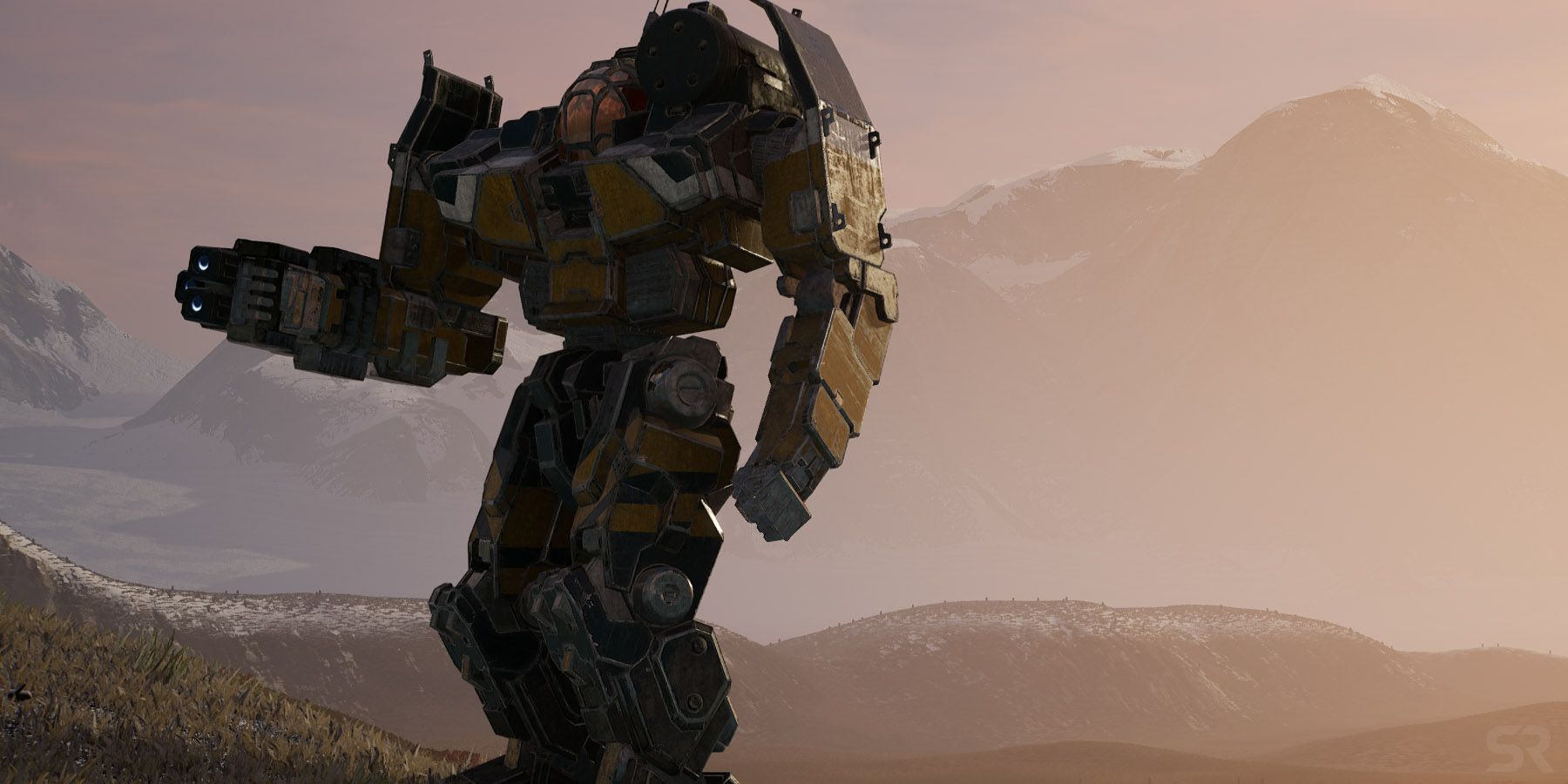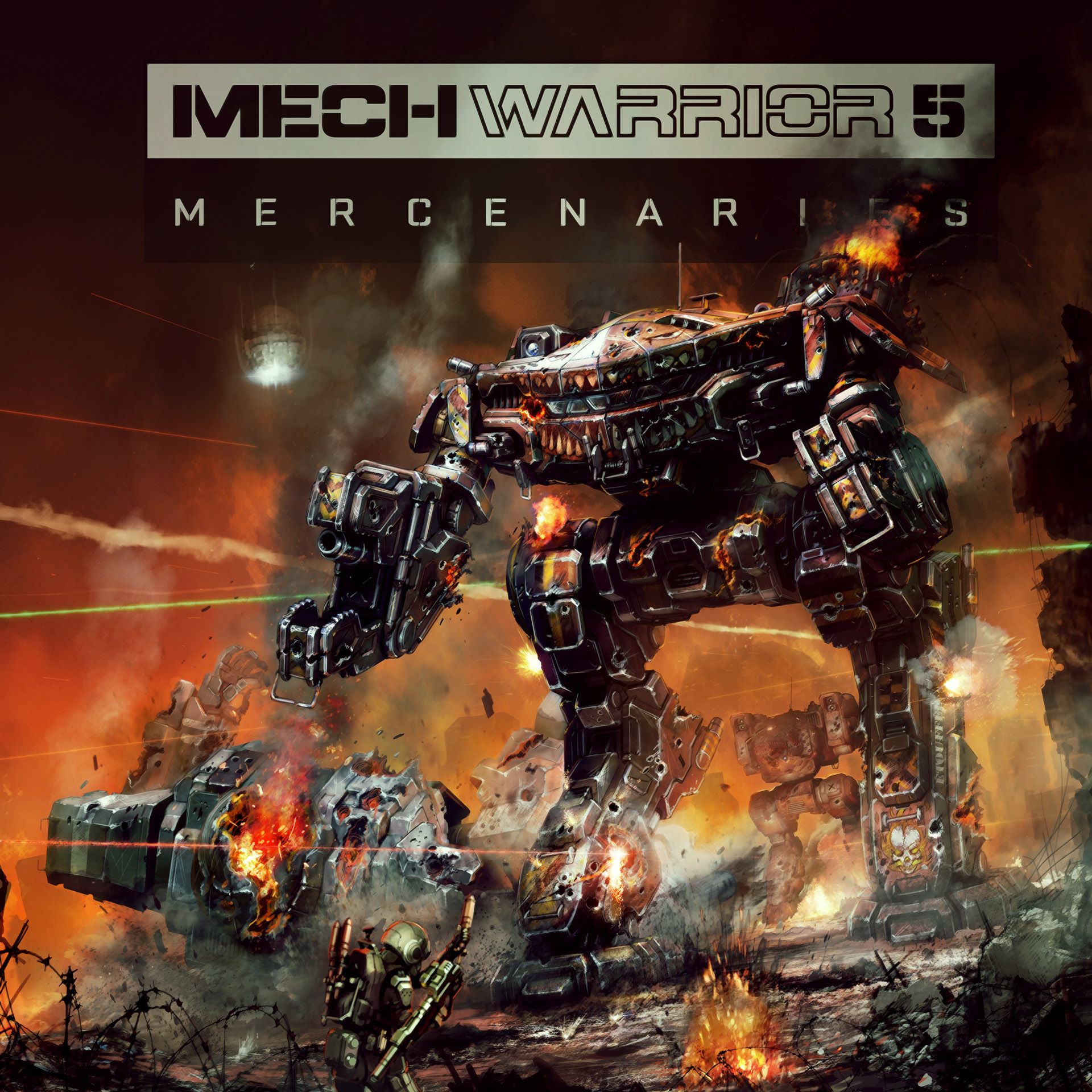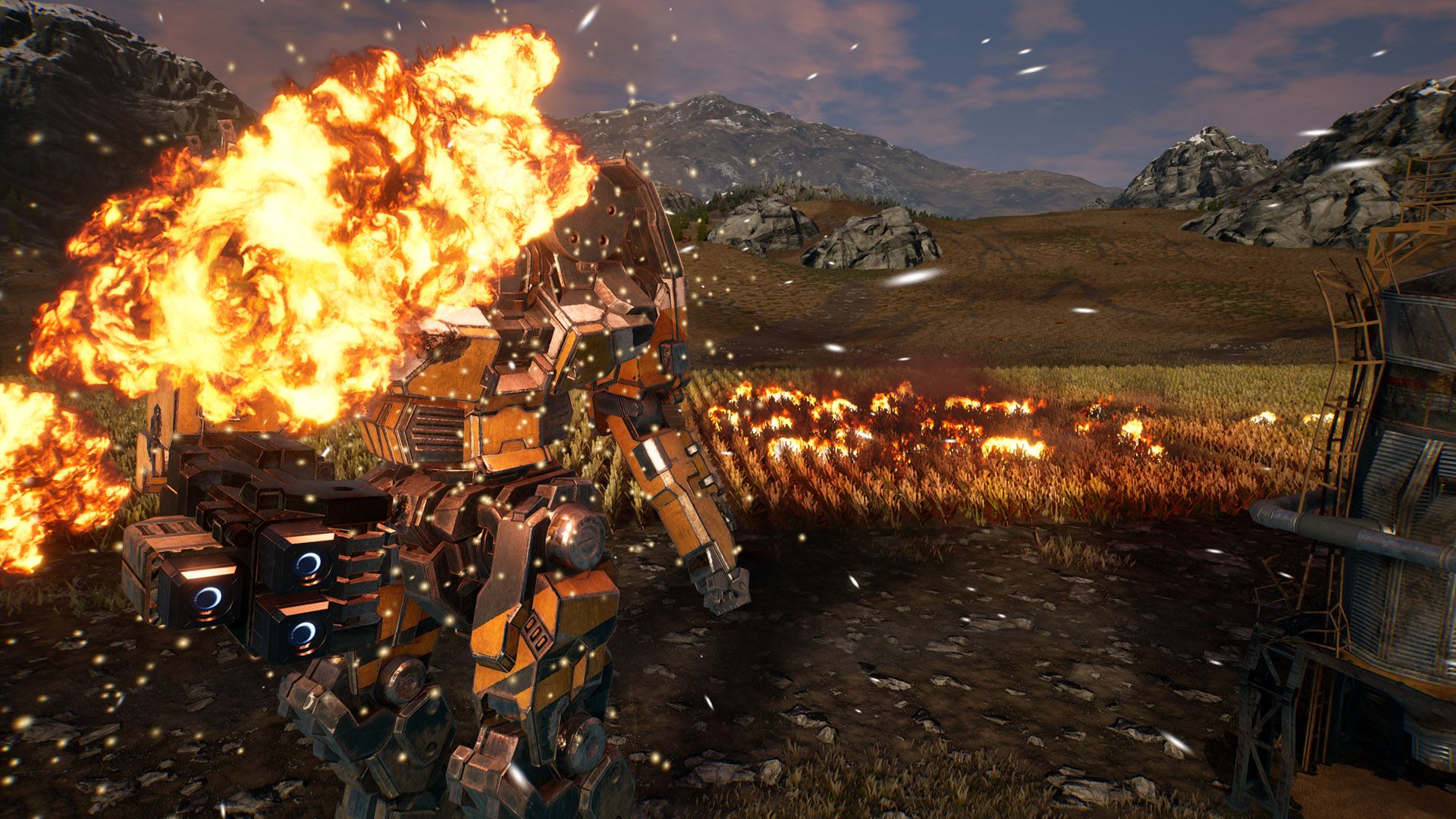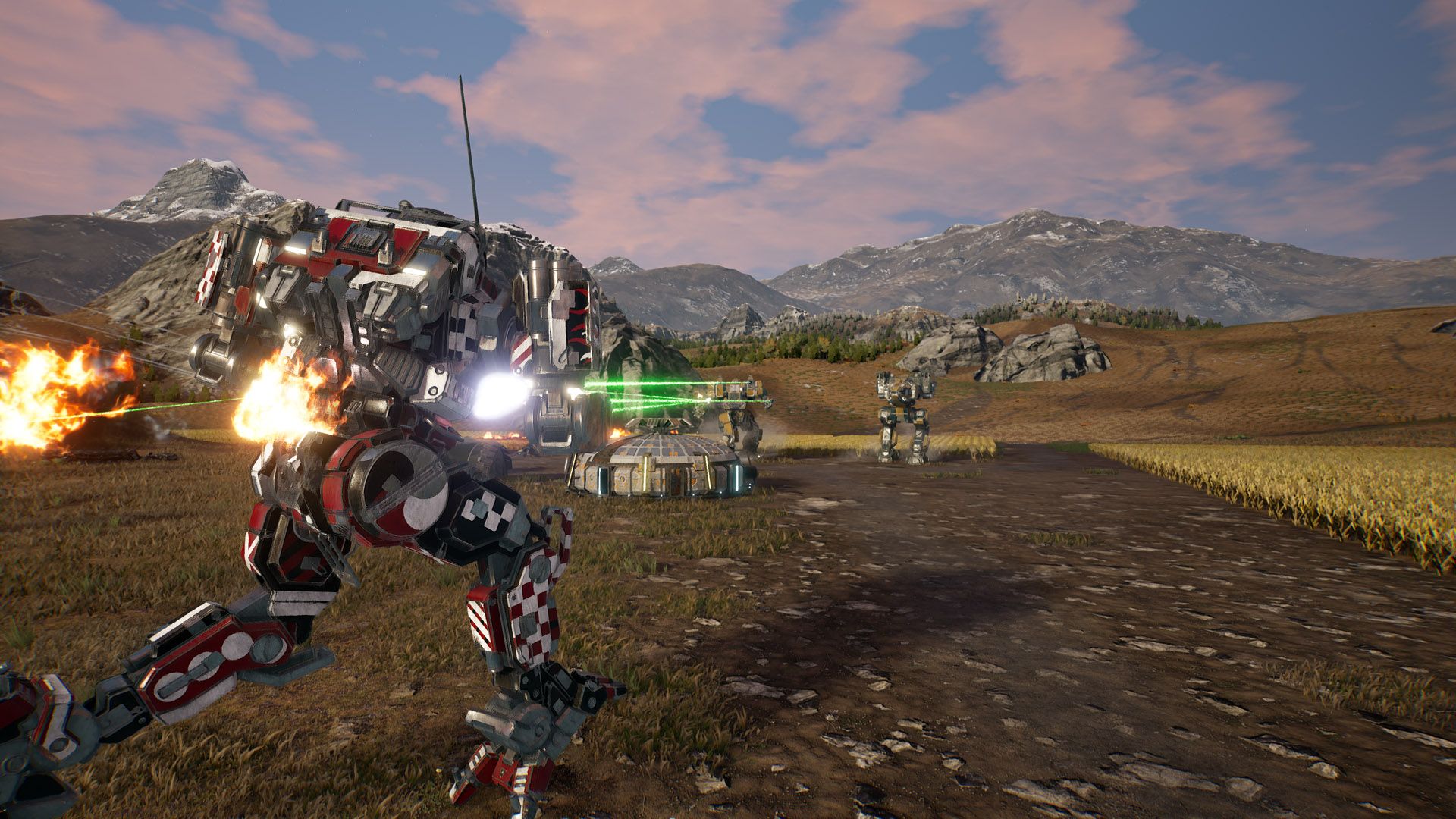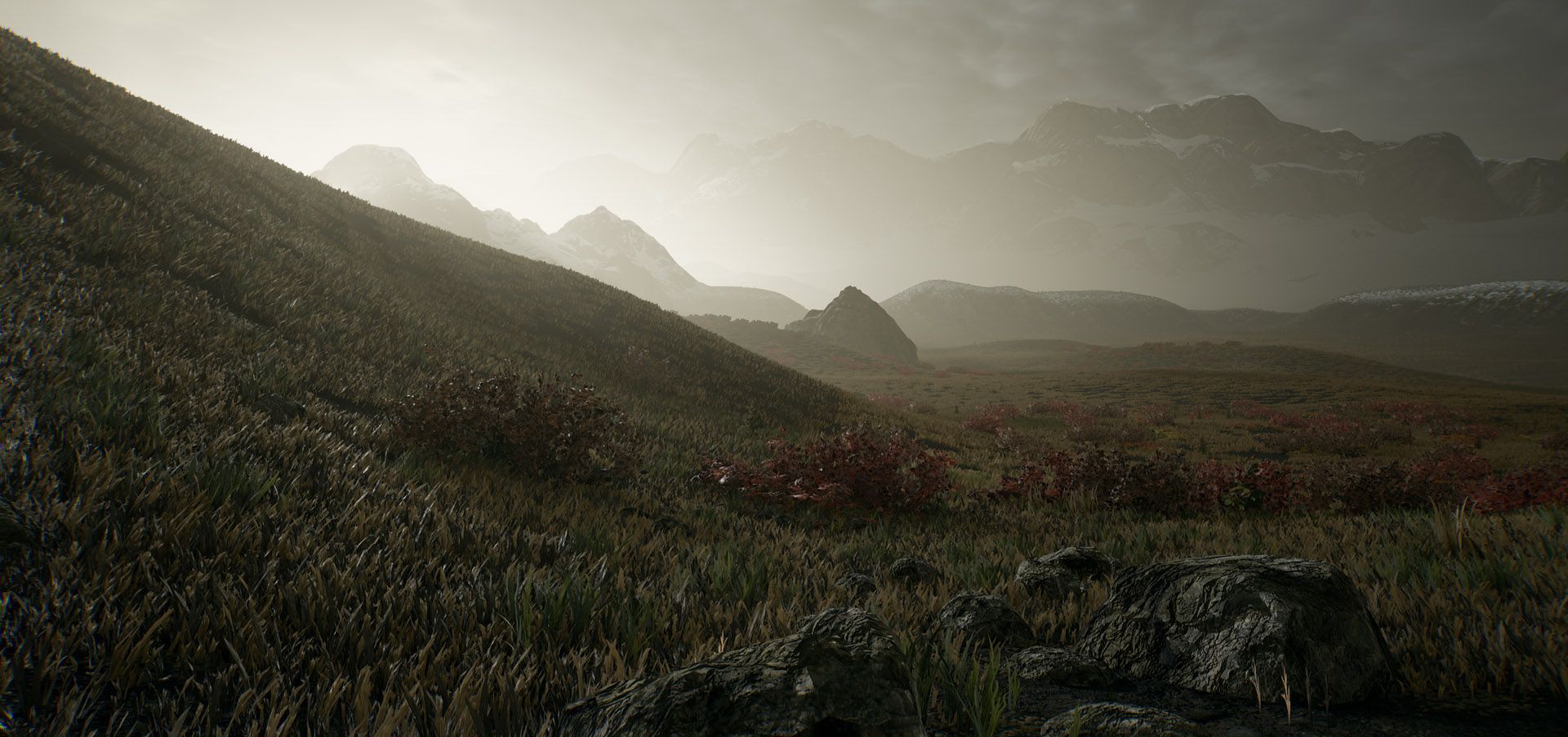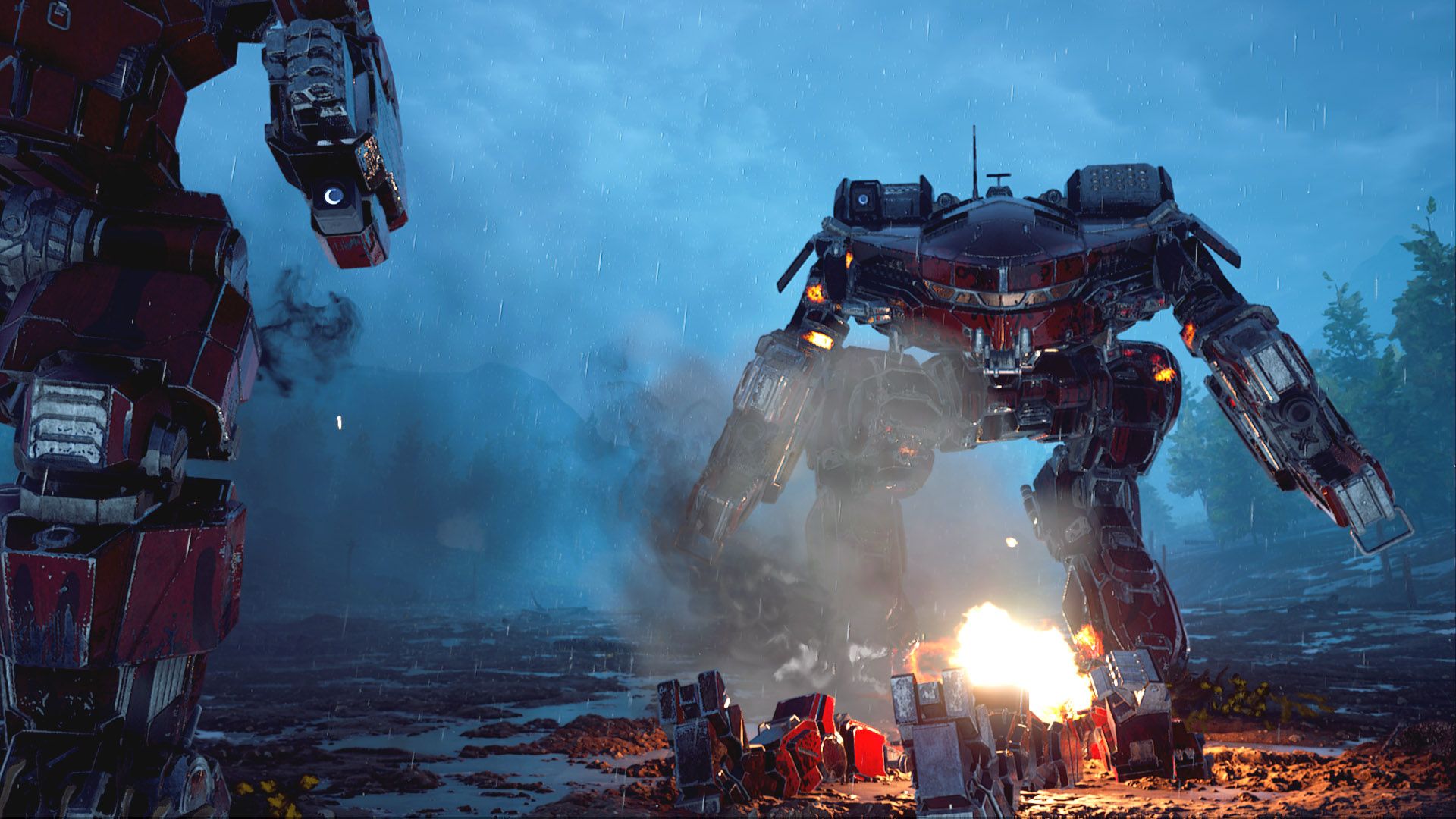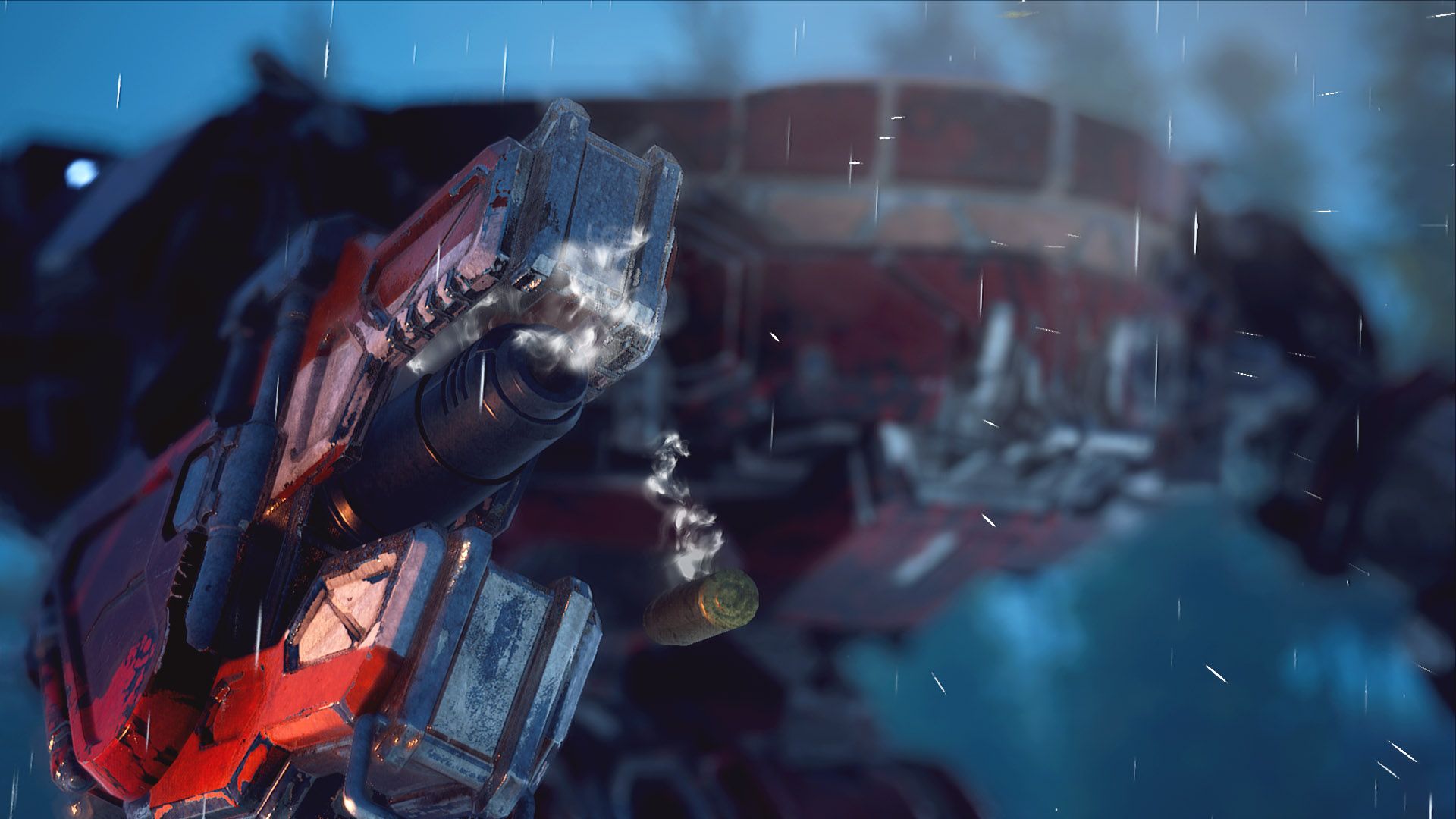Mech_Con 2018 has begun and MechWarrior 5: Mercenaries is the focus of this year's fan meetup in Vancouver. We had the chance to get hands-on with game, in single-player and co-op while visiting developer Piranha Games, and we sat down with CEO Russ Bullock to talk about the development and features of the long-awaited, eagerly anticipated sequel to the classic PC mech franchise.
Related: Screen Rant's Hands-on Impressions with MechWarrior 5
Our discussion begins talking about Mech_Con and how much work goes into planning it for every December. As it turns out, Piranha has weekly meetings that begin in February, meaning that for nearly the entire year there's a focus on the next fan-focused MechWarrior meetup.
Russ Bullock: We take January off. And then in February we start weekly meetings planning for that next year. Yeah. So, like for 11 months we plan this. For 11 months we are planning so it starts out with like venues first thing. So, we've changed venues all three years. Various reasons. Commodore Ballroom was great. They weren't available for year two. So, we picked the biggest kind of hotel that you could find and that was great. But then the venue's too small. We were jammed. It needed to be been bigger. We wanted to get bigger. So, we choose a venue, get all the hotels sorted. Long story short, it takes all year.
Screen Rant: Not just logistics, but do you plan that early for what you want to showcase? Like co-op is a big thing for Mech_Con 2018.
Russ: Yeah. Not quite that early. I'd say we know, for a show like five playable and— And it probably takes, I would say, certainly by summer or even early summer by May, June, we’re starting to get a pretty good idea of what we want to show. Some of it’s in question until a little bit later, like the co-op demo being part of this year’s Mech_Con was maybe a little up in the air even let's say two months ago. But it was like, “No, got to do it. Focus. Got to have it.” Sort of pushed for that. Everything we did is, you know how these things go. Like it's a lot of work to make these demos for these shows. But they also serve a very powerful purpose of really pushing your game to particular states of completion that go a long ways towards getting your game done. So, now we're in a good spot. We got co-op in pretty good shape. There's still bugs and issues, but it's good and working, playable. We are making story decisions now. All you're destructible systems are essentially done. So, you're in a good state when you get to that point.
We had various conversations over the years about how MechWarrior Online came first. Can you talk about the history of that and how the IP part of that may have come into play? How MechWarrior Online came first, it grew, and now you're finally able to do a story-based experience.
Russ: Pretty much out of necessity. Because like I said, if everything was all perfect and we could do anything we wanted, we never would have wanted to do it. We'd probably have made, like we would have made MechWarrior 5, first. We kind of tried that in 2009. We couldn't get it off the ground.
So, when we started to make MechWarrior Online, I think it's, you saw a similar trend in the industry, and you still do to this day, that smaller independent studios don't just sit down and make the big single player games. You know, like mostly that's reserved for the Sony's. Making the Last of Us and so on and so forth. And you see a lot of smaller studios, whether it's Rust or whatever it is, they make like a multiplayer game. Because you know, the amount of money it takes to create these single player experiences, with all these big scripted sequences, and all this stuff, is just so intense. That normally-- So, for MechWarrior, development was like, “Well you know, we think we can make MechWarrior Online.” And at that point, World of Tanks was just coming into its power in the western world.
And we kind of looked at that and said, “That's interesting.” Because it looks like you can make a very core game experience as a free to play game. And it'll work. Because previous to that, it was mostly sort of caricature type, simpler cartoony type stuff. If you think of the kart racers, or even the original Medal of Honor, the free to play was like a spin on it. So, when we saw World of Tanks, we thought we saw an avenue into getting a MechWarrior game done. The amount of money and time it will take, just to get to that initial, like a Beta release of [unintelligible]. We figured we could do. And the amount of time and money that we could afford to do. So, that's kind of what drove us. That’s what drove our decision. And a lot of smaller studios would be driven that way. And so, we made MechWarrior Online. It took us like, well a full four years of MechWarrior Online before we were in a position to start MechWarrior 5.
The MechWarrior 5 greenlight, was that after the old publisher, IGP, kind of folded?
Russ: The MechWarrior 5 commit?
Yes.
Russ: Yeah. So, we bought them out in the summer of 2014. And it was about another 18 months after that, that we started MechWarrior 5.
Was there an IP issue ever? Or it's just a case of resources sort of thing?
Russ: Yeah, no, it was not an IP issue at all. Just the timing and resources and when we could afford to do so.
And how did the engine switch to Unreal come into play?
Russ: Yeah, well, I mean when we decided we were going to make it, we started to think about what we make it in. And we considered, you know, we took a look at the very newest version of CryEngine at that time. I think they jumped ahead and call themselves CryEngine 5 or something like that. We looked at that. And we were looking at Unreal. And really the assessment was like, “Well, we're going to have to, if we’re going to do this, we need to be able to leverage as much of all these years of MechWarrior Online line development as possible.” And so, naturally you might think, well that would also include just using the exact same engine, and code base, and everything. But we also knew some of those things we had to accomplish in order for MechWarrior 5 to be what it needed to be. And we did investigate a code assessment of building off of MechWarrior Online and CryEngine technology. Or, versus just starting over with Unreal. And we still found that we could get done, have a better game, and get it done faster. Starting with Unreal than continue on with CryEngine. It's just the tool chain and the development processes was that much faster and better.
In terms of assets though, you bring Mech designs and such over?
Russ: We brought it over. So, we brought it all over. We had to do some upgrading, because the version of CryEngine that we used, 3.8… No, we're at like 3.4 or something. Bottom line is it was just previous to CryEngine’s physically based rendering. So, when we brought our art and all of our mechs over to Unreal, we did have to upgrade, all the materials and everything to PDR and stuff. So, that was part of the process. But still, you're looking at hundreds and hundreds of battle mech chassis that we were bringing over. So, where past MechWarrior mercenaries’ titles had like 12 to 15 maximum, we've got like 300. So, that's a huge boon for our name because our free market out there in the Inner Sphere is actually like a well populated market. Where you might see rare mechs in various areas of space and stuff. So, yeah, definitely got a lot of leverage out of that artwork. But it just didn't come over like, you know, like perfect. We had upgraded.
How many mechs are going to be playable in the game? Or acquirable?
Russ: Yeah, there'll be about, this is a rough guess. It's about 50 different unique chassis. With like three to four variants each. So, we're in the 250 range of various chassis.
But there's also, for the first time now, we can finally see other vehicles, like tanks and helicopters. How many vehicles like that are there?
Russ: Certainly, the first time for us. You did see a bit of that in Mech 4-ish. But, yeah, that's great. I mean, because a lot of people were really Jones-ing, craving that, after all those years in MechWarrior Online. And just PVP. People are really, really looking forward to the PVE experience, like in past games. Also, they want that, you know, combined arms thing, feeling, where you're shooting not just other mechs.
But sometimes in the early going missions might just be, you know, killing lots of vehicles and turrets and all sorts of things like that, are very hard. Some of them are hard, like this one tank in the demo and it's the demolisher tank. It has like double AC-20s on it. So, it doesn't take the abuse that a mech can take, but you don't want to leave it unintended, it can do a lot of damage.
In the PVP part of MechWarrior Online, there's so much that goes into like balancing the mechs. But in this, you don’t have to worry about that as much.
Russ: Yeah. Not near as much. We can really just tune for fun, you know. It's like, in MechWarrior Online, everything you do, like everything about a medium laser, how much damage it does, how much heat is, it’s all down to the decimal point. You’re balancing and the communities like, “Well, it’s OP.” Or you have to Nerf something in the past and it’s a big thing. For here, it's really just about like, you know, is it balanced? Is it really fun? Does it feel great? It doesn’t necessarily matter if the medium lasers do six damage instead of five. As long as it feels perfect. The health values of the vehicles and stuff can just be balanced for fun, and yeah.
"We can really just tune for fun, you know."
What's the biggest change for like a weapon or equipment type then from MWO to MW5?
Russ: Yeah. Honestly, not a lot at this point. Like meeting, we were able to start off with, you know, basically MechWarrior Online values. So, you know, we bring in like all the weapons and all the data and how much heat damage, and damage and all that stuff just kind of comes over. But I guess the beautiful thing is that it… it doesn't matter, you know, if we have to change any of that stuff. Because you're not-- as long as you're not competing with other players, there's really no limits to what you can tweak and change.
With replayability being one of the core pillars, you talked about there being map generation, using your system. Can you talk about how that works. Will it include things that we saw in the demo mission like farms and fields?
Russ: Yeah, it will. Basically… Designs creating all the puzzle pieces. They're essentially like these, I think the tiles are like close to a kilometer square. Maybe 750 meters square or something like that, roughly. So, some of them are just purely terrain, but the terrain has these spawn markers on them. So, these spawn markers say, well here's where foliage is, or here's where trees are, or here's where rocks are. And if you're in a Mars desert-like planet, well there's no trees, and the rocks look like this, and so on, so forth. But if you're in a forest terrestrial Earth-like map, and it's wintertime in the polar highlands, then you'd get, you know, snow covered fur trees, and there’s snow on the ground. So, the system is created to any number of more than a dozen biomes can all use the exact same tiles. The exact same tile sets. They use different materials, different textures, different rocks, trees, shrubs and whatever else to make it that particular biome.
And then the encounter is the basis, whether it's like a farm, or the big city environment in the demo board. Those are also staked out in tiles. So essentially, your generator can decide to use that port. Let's say you might create 10 or 12, 15, 20 whatever you have time for, different configurations of like a port-like, we call it garrisons. A general term in our design. So, it's like we create as many of these garrisons as we can. Some of them are cities and farms and ports. Some are arenas, fighting arenas, right? That are different, location based, art. So, then the generator says, “Okay. So, we're going to create a mission that's Arctic biome. It's going to be this big, it's going to be five by 10 tiles let’s say.” And like I said, it's going to be arctic. And okay, the main thing is it's going to be an assault on a mining facility. And so, we know to use these particular mining facility tiles. And they might choose from a dozen different of those. And then make sure that's put in the map. And the generation kind of—So, there are recognizable puzzle pieces. Certainly, someone who has put dozens of hours in the game, might recognize the fact that, you know, they've seen that particular port before. But everything around that port, how they got to the port, the path they took to get there, and the look and feel of the terrain getting there, and even the encounter itself might have different enemies and stuff. So, there's a limit to the randomness. It's not completely 100 percent procedurally generated to like even the designers don’t know what's going to happen. It's like, “Oh look at this neat thing.” No. It’s within rules. So, we like to call it rule based level generation. So, there's a limit, but it's still a lot of combinations.
The generated maps, are these are like the side missions? Or are these story missions as well?
Russ: Primarily the, I guess I'm not going to call them side missions, I'll call them the main compulsion loop missions, you know, like the ones where you're grinding out your reputation and earning your c-bills. And you know, buying bigger and better mechs. And so, all the stuff that you do in between your star mission zones.
So, you are earning in all these missions though?
Russ: Oh, yes.
Oh, okay. I wasn't sure.
Russ: Oh, yeah. Yeah. I mean that's your main form of earning. Is to just go off, take contracts, and defend garrison contracts, assault contracts, all of them. You're going to be earning c-bills, getting salvage, selling salvage, pooling your money. Maybe you’ll sell that mech now and get a bigger mech. And then slowly build up to like a bigger, better and more powerful elite mercenary unit. And all the while you're taking the story missions as they come along to you.
When your friends kind of drop in and help you out for any one of these missions, are they thinking, I know they take one of your pilots, is the host also kind of choosing their men?
Russ: Yes. The whole sustained health welcome play this guy from the beginning. You know, your friends, you probably avoid, say probably say, “Nah, nah. Not me and the Dragon.” I mean that's between you and your pal.
You talked about the story side of it, you guys worked with Catalyst on the board game side. Was the pitch from beginning to be like this is the mercenaries game. This is the era it’s set and then?
Russ: Yes. That much was set in stone. We knew that. We also knew this story. So, we work with Randall [Bills] and he’s been working with the brand for forever, for his whole life it seems like. He's written novels and said, “Hey, you know, we'd like, do you want to take a shot at writing the story for us?” And gave him a little bit of guidance. Like we kind of had this sense of, “We want the player to have this history and we wanted there to be an incident with his old unit, or his parents’ unit so that you have to start out with nothing. And should be some sort of like, you know, revenge arc, but also some larger arc.” And so, we gave some guidance like that. Stuff like that. Some really good ideas. Did a couple few rounds of feedback. And it’s good. It worked out well.
Is it challenging working with another company like that? And also trying to fit it into like-- Because there is so much lore and so many stories in this universe. Plus four old school games in the nineties, and kind of building off-- Were you trying to continue any of that? Or just pick an era and here's your new story.
Russ: Yeah, no. It’s more of the latter. I guess, it’s going to be hard to decide because there's so much. But, there's so many interesting stories to be told that’s the thing. There probably could have been a 100 different stories written for this game. Every one of them would have been great. And we felt like we ended up with one of them. And so we're happy.
You mentioned there’s mod support for this game.
Russ: Yes.
What will players be able to play with?
Russ: Oh, it's pretty, it's quite a lot. I mean there's really only, there's very few limitations and it's just, I suppose they won't be modifying the actual, you know, like game code. But the power of the blueprint system now in unrelated area that that doesn't even hardly mean anything it seems like. There won't be a lot you won't be able to mod. People can go in there and change anything. Make new mechs, make new vehicles, make new missions, story arcs. Very little limitations really.
So, would it be all just kind of up to their own toolkit sort of thing. It's like a mod tool, right?
Russ: Yeah. It's pretty much just Unreal, Unreal editor. And that's all there.
What are you most excited for fans to see? When they finally get to play a new MechWarrior story.
Russ: I guess I would go with… To me there's a few things. But the one thing would be, I think, the fact that you're physically in your mech hanger. Like I think that's the thing that might resonate with so many people. It's like you're there on the ground, you're in your Leopard, you're walking around the Leopard. You to see your technicians, you see your mech, you see how damaged it is when it comes back from missions. Just having that physical, I'm there looking at your battle mechs and looking what damaged state they’re in and stuff like that.
That does raise another question, actually. So, for the repairing, are you just paying to repair it before you go out again for the next mission?
Russ: Yeah, like if it’s too damaged to go out, obviously, if you just lost an arm, lost your lasers, no one’s going to stop you from taking it out next time. You want to save your c-bills if you can get the mission done. But yeah, everything takes time and money. So, let's say it's going take three weeks and you know, 200,000 c-bills to repair that battle mech, then you can start the repairs and three weeks goes by on the game clock and 200,000 comes out of your accounts and your mech’s repaired. So, you're paying a cost both in c-bills, but also in time. So, time is a resource, like you've only got so many years to get your career done. Like the game spans from 3015 to 3049. So, that's your career. You have a 34-year career to try to achieve elite mercenary status.
And how many extra mechs can you have to like swap in? Can you build up an inventory of extra mechs?
Russ: Yes
Is there a limit to that?
Russ: Um, I'm not sure yet. We've been debating that. That’s kind of just going to be a number in the UI in the end, but it's a balanced item that can tune for economy sake and balance sake. There's upkeep costs though based on how many mechs you have.
When you lose weapons, like are they gone? Can you replace it with a new one?
Russ: If you’re totally destroyed, it can be replaced, it can’t be repaired. So, medium laser is totally destroyed, go to the market and buy one. Or you probably have ten in your inventory from the salvage.
Okay. And can you customize the look, beyond the weapon parts, like the colors and stuff like that?
Russ: Yeah, we didn't show that, but it's very much like MWO. We brought over a lot of the same patterns, everything. So, you like to franken-pattern in MWO, you can paint your mech that way.
You pay c-bills for that?
Russ: Probably be a c-bill cost not, probably not, a time cost. Just a little bit of money to paint your mech.
Awesome. Thanks!
More: MechWarrior 5's New Trailer and Screenshots
MechWarrior 5: Mercenaries releases for PC on September 10, 2019.

